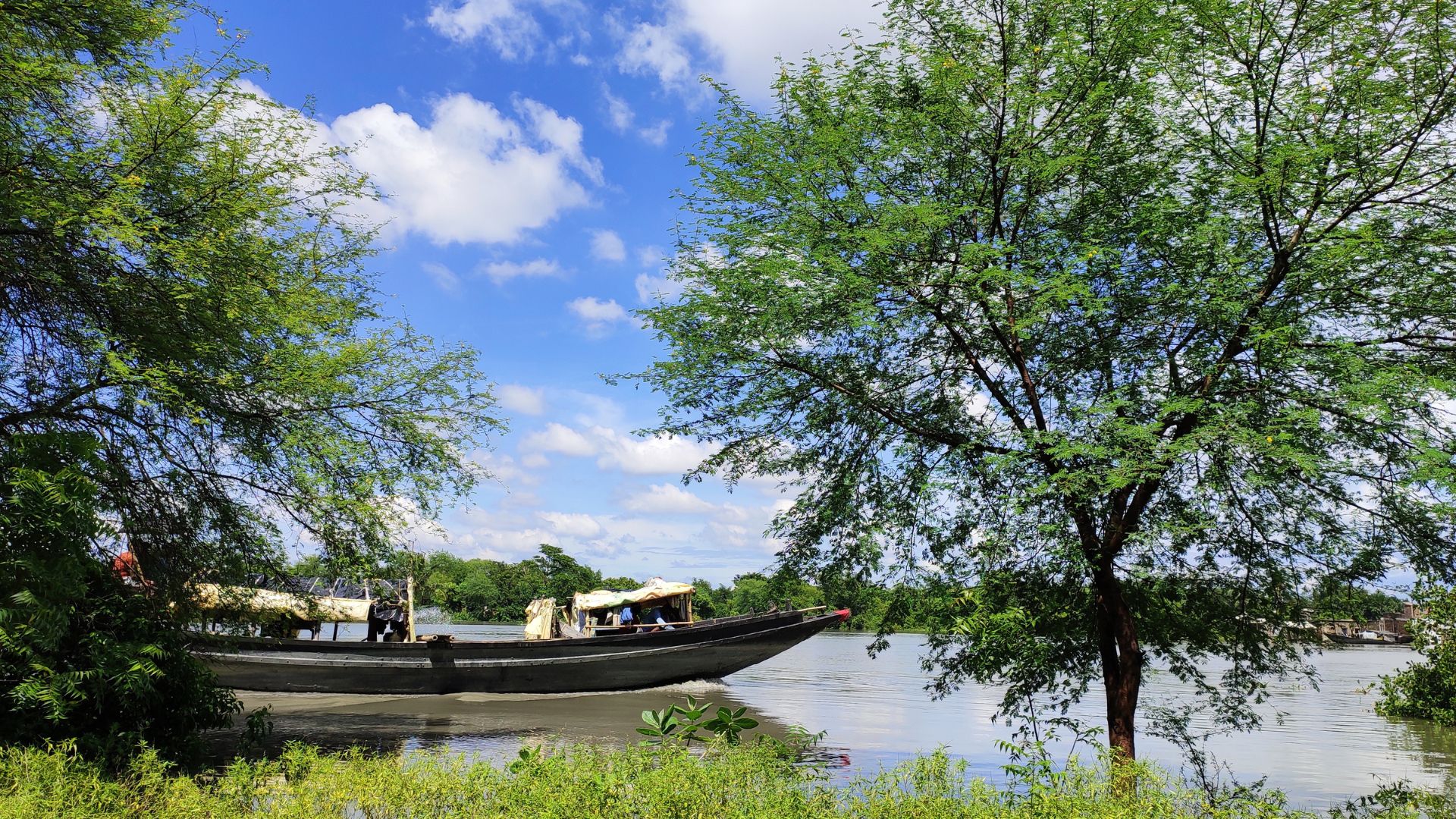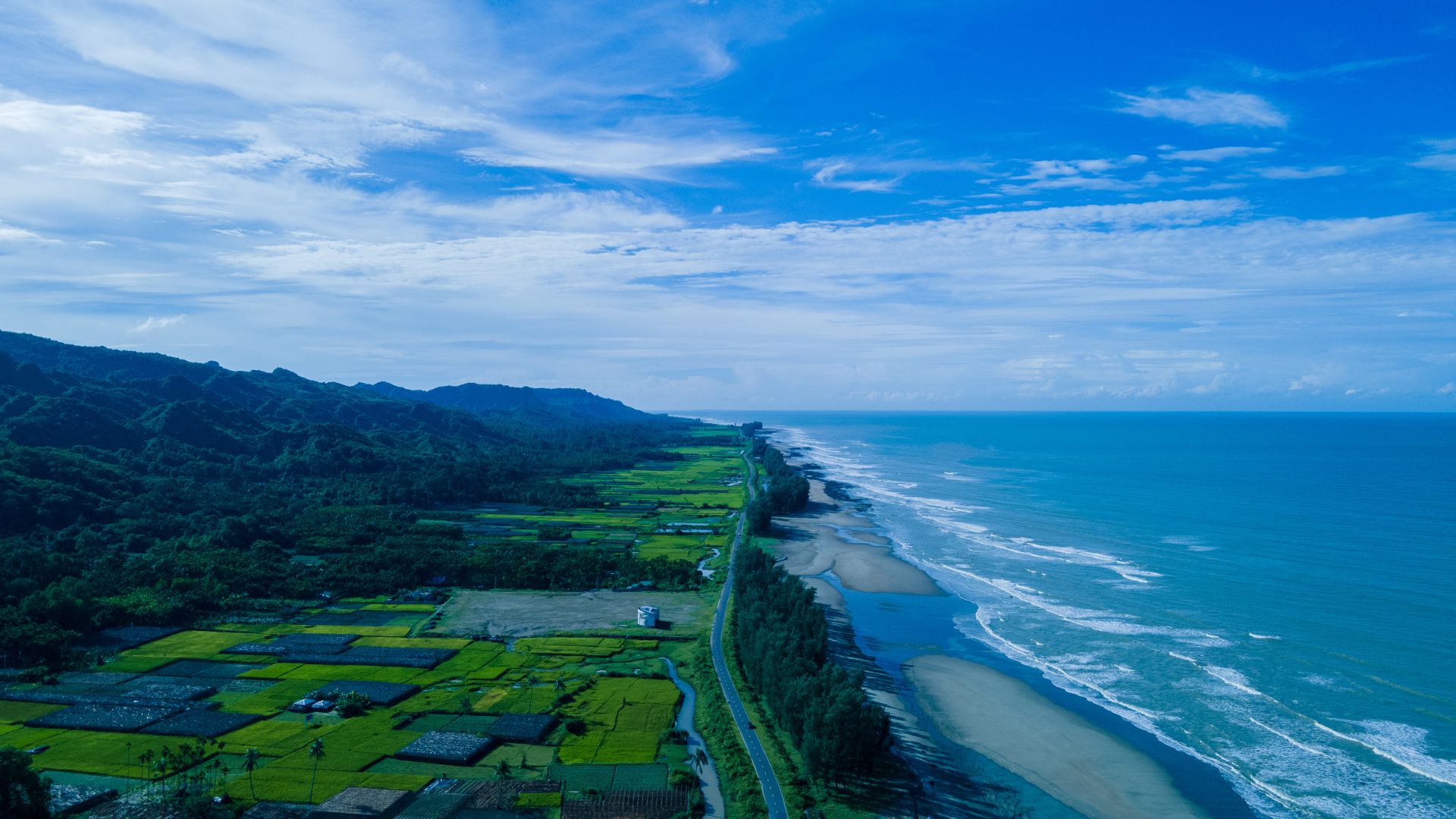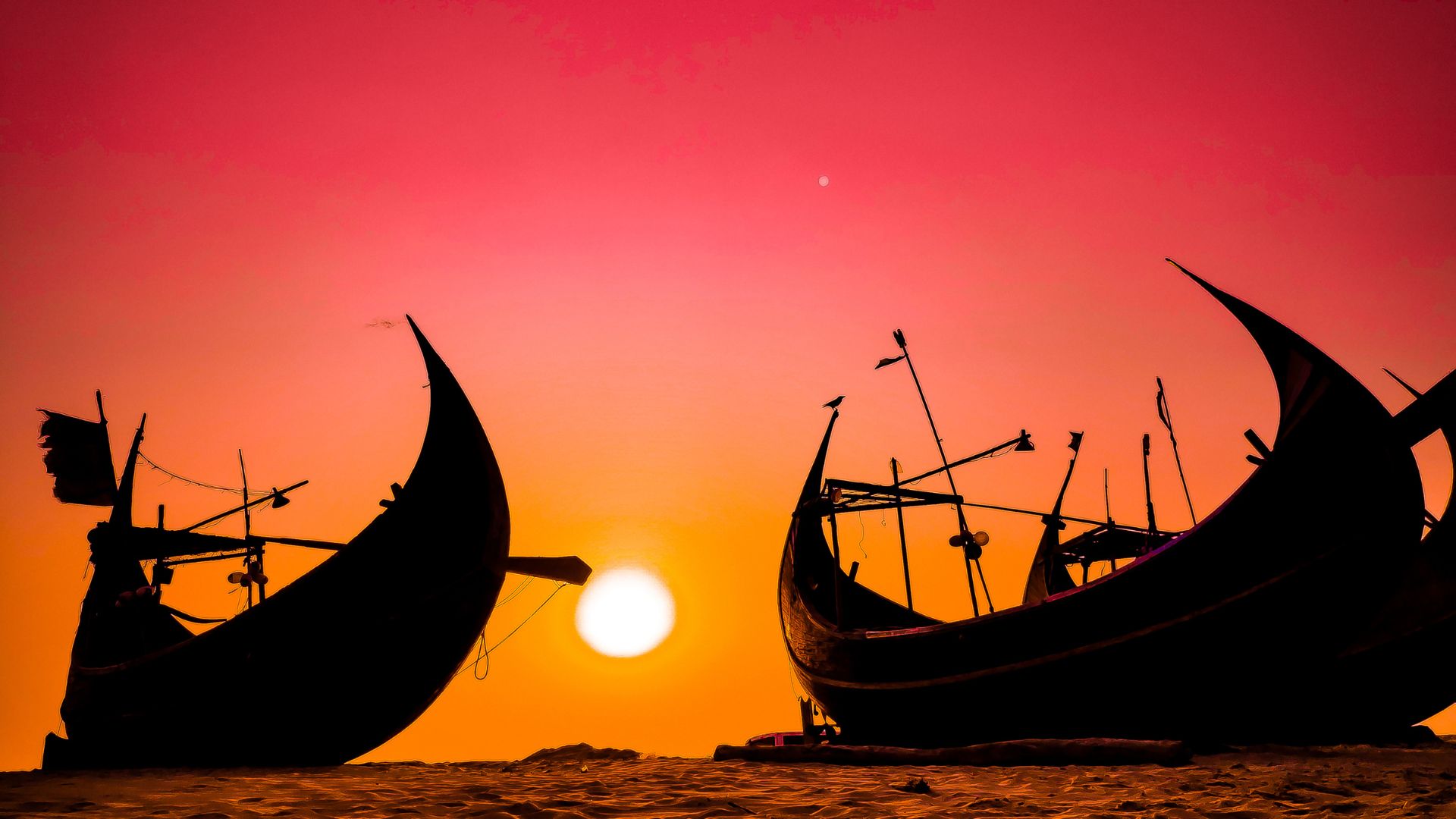Timing can make or break your Bangladesh trip. Visit during the wrong season, and you'll face oppressive heat, torrential monsoon rains, or overwhelming crowds. Visit at the right time, and you'll enjoy pleasant weather, vibrant festivals, and the country at its most beautiful. Bangladesh's tropical monsoon climate creates three distinct seasons with dramatically different experiences, and choosing when to visit depends on what you want to see, what activities you plan, and how much weather discomfort you can tolerate.
The short answer: November to February is universally considered the best time to visit Bangladesh. The weather is cool and dry, festivals are plentiful, and all regions are accessible. But this simple answer doesn't tell the whole story. March offers great weather with fewer crowds. The monsoon (June-September) transforms the landscape into lush green beauty and brings the country's rivers to life - perfect for Sundarbans trips despite occasional rain. Even the hot season (April-May) has its moments, particularly for experiencing Bengali New Year celebrations.
This comprehensive guide breaks down Bangladesh's weather patterns month by month, highlights major festivals and events, explains regional variations, and helps you choose the perfect time based on your priorities - whether that's ideal weather, specific festivals, budget considerations, or avoiding crowds. By the end, you'll know exactly when to book your Bangladesh adventure for the experience you want.
Understanding Bangladesh's Three Seasons
Winter (November - February): Peak Tourist Season
This is Bangladesh's glory period - pleasant temperatures, low humidity, clear skies, and virtually no rain. Daytime temperatures range from 20-28°C (68-82°F), dropping to 10-15°C (50-59°F) at night, especially in northern regions. The weather is comfortable for all activities, from city exploration to beach relaxation to hill trekking.
Pros:
- Perfect weather for outdoor activities and sightseeing
- All regions accessible and at their best
- Clear skies ideal for photography
- Major festivals including Victory Day (December 16)
- Best time for beach destinations like Cox's Bazar
- Comfortable for hiking in Bandarban, Sajek, Rangamati
- Excellent for Sundarbans wildlife viewing
Cons:
- Peak tourist season means higher prices (hotels 20-50% more expensive)
- Popular destinations get crowded, especially Cox's Bazar on weekends
- Need to book accommodations well in advance
- Morning fog can occasionally disrupt flights and travel in December-January
- Northern regions can get surprisingly chilly in January (bring layers)
Best for: First-time visitors, families, beach lovers, wildlife enthusiasts, photographers, and anyone prioritizing comfort over budget.
Summer/Pre-Monsoon (March - May): Hot but Manageable
The heat builds progressively from pleasant March (25-32°C / 77-90°F) to scorching May (30-38°C / 86-100°F). Humidity increases, making it feel even hotter. This is Bangladesh's least popular tourist season, but it has advantages for budget travelers and those timing visits around specific events.
Pros:
- March weather is still quite pleasant, especially early in the month
- Significantly fewer tourists = better deals and empty attractions
- Hotel prices drop 30-50% compared to winter
- Pohela Boishakh (Bengali New Year) celebrations in mid-April
- Mango season! Fresh, delicious mangoes everywhere
- Hill stations offer cooler temperatures than lowlands
Cons:
- April-May heat is genuinely uncomfortable (38°C+ common)
- High humidity makes it feel oppressive
- Afternoon activities become difficult due to heat
- Power cuts possible during peak heat, affecting AC
- Not ideal for extensive outdoor activities or trekking
- Occasional pre-monsoon thunderstorms (nor'westers) in April-May
Best for: Budget travelers, festival enthusiasts (for Pohela Boishakh), mango lovers, and visitors who can handle heat and plan activities for mornings/evenings.
Monsoon (June - October): Green, Lush, and Wet
The monsoon transforms Bangladesh from brown and dusty to lush green paradise. Rivers swell, waterfalls come alive, and the countryside becomes incredibly photogenic. Rain is frequent but rarely lasts all day - expect heavy downpours alternating with clear periods. Temperatures moderate (25-32°C / 77-90°F) with high humidity.
Pros:
- Landscape at its most beautiful - vivid green everywhere
- Rivers and waterfalls at their most impressive
- Best time for Sundarbans (rivers full, easier boat navigation)
- Fewer tourists = better prices and quieter experiences
- Temperature more bearable than summer months
- Waterfalls (Madhabkunda, Bisnakandi) at peak flow
- Authentic experience of riverine Bangladesh
- Eid ul-Fitr and Eid ul-Adha usually fall in this period
Cons:
- Rain disrupts plans - expect delays and cancellations
- Some roads become impassable, especially in rural areas
- Flooding possible in low-lying areas (July-August worst)
- Beach season is over - Cox's Bazar less appealing
- High humidity makes it feel sticky and uncomfortable
- Mosquitoes abundant (bring repellent)
- Some attractions may close or limit access during heavy rains
Best for: Adventure travelers, photographers (dramatic skies and lush greenery), Sundarbans enthusiasts, and budget-conscious visitors who don't mind rain.
Month-by-Month Weather & Travel Guide
November: The Perfect Month
Weather: 18-28°C (64-82°F), minimal rain, low humidity
Crowds: Moderate, increasing towards month-end
Why visit: Arguably the single best month - perfect weather without peak December-January crowds. Prices still reasonable early in the month.
Events: None major, which is actually a pro - easier to find accommodation
Best for: Everything - beaches, hills, cities, wildlife
December: Peak Season Begins
Weather: 14-26°C (57-79°F), dry, cool nights
Crowds: High, especially Christmas/New Year
Why visit: Excellent weather, Victory Day celebrations (Dec 16), festive atmosphere
Events: Victory Day (public holiday with parades), Christmas celebrations in Christian areas
Best for: First-time visitors, families, those prioritizing weather
Note: Book accommodations early, prices 30-50% higher than summer
January: Coolest Month
Weather: 12-25°C (54-77°F), crisp and dry
Crowds: Very high
Why visit: Coolest temperatures, perfect for physical activities and hiking
Events: Dhaka Lit Fest (mid-month, varying dates)
Best for: Hill station trekking, extensive city exploration
Pack: Light jacket/sweater for mornings and evenings, especially in north
February: Last of the Best
Weather: 15-28°C (59-82°F), warming but still pleasant
Crowds: High early month, decreasing towards end
Why visit: Still excellent weather, Ekushey Book Fair (throughout February)
Events: Shaheed Dibosh (Language Martyrs' Day, Feb 21), Ekushey Book Fair
Best for: Cultural enthusiasts, last chance for prime weather
Tip: Late February offers good balance of weather and fewer crowds
March: Sweet Spot
Weather: 20-32°C (68-90°F), warming but comfortable
Crowds: Low to moderate
Why visit: Great weather with significantly fewer tourists, prices drop
Events: Shafalata (flower festivals in various regions)
Best for: Budget travelers seeking good weather without crowds
Underrated: This is actually one of the best months - weather still good, crowds gone
April: New Year Celebrations
Weather: 25-35°C (77-95°F), hot and getting hotter
Crowds: Moderate during Pohela Boishakh (April 14), otherwise low
Why visit: Experience Bengali New Year, one of Bangladesh's biggest cultural celebrations
Events: Pohela Boishakh (April 14) - colorful processions, traditional music, special foods
Best for: Cultural enthusiasts, festival lovers
Caution: Heat intensifying, plan indoor activities for midday
May-June: Hot and Pre-Monsoon
Weather: 28-38°C (82-100°F), very hot and humid, occasional storms
Crowds: Very low (for good reason)
Why visit: Only if you have specific reasons - Eid celebrations, extreme budget travel
Events: Eid ul-Fitr (dates vary based on lunar calendar)
Best avoided unless: You're timing visit for Eid or have high heat tolerance
July-September: Full Monsoon
Weather: 26-32°C (79-90°F), frequent heavy rain, high humidity
Crowds: Very low
Why visit: Sundarbans at its best, lush green landscapes, dramatic photography
Events: Eid ul-Adha (dates vary)
Best for: Photographers, Sundarbans trips, adventurous travelers
Avoid: Beach destinations, extensive road trips
October: Monsoon Tail-End
Weather: 24-32°C (75-90°F), occasional rain, humidity decreasing
Crowds: Low
Why visit: Shoulder season - weather improving, prices still low
Events: Durga Puja (major Hindu festival, vibrant celebrations)
Best for: Budget travelers willing to risk occasional rain
Tip: Late October is particularly good as rain tapers off
Major Festivals & Cultural Events
Pohela Boishakh (April 14)
Bengali New Year is Bangladesh's most colorful secular festival. The day begins with Mangal Shobhajatra (procession) in Dhaka University, featuring giant masks and colorful floats. Everyone wears traditional clothing (women in red-bordered white sarees, men in punjabis). Streets fill with cultural programs, traditional music, and people eating panta-ilish (fermented rice with hilsa fish).
Best experienced in: Dhaka (Ramna Batamul ceremony, TSC area), Chittagong, Sylhet
Book ahead: Hotels fill up, especially in Dhaka
Cultural significance: Celebrates Bengali culture and secularism
Ekushey February / Shaheed Dibosh (February 21)
International Mother Language Day commemorates the 1952 Language Movement martyrs. Barefoot processions to Shaheed Minar at midnight (February 20-21), book fair throughout February, and reverent atmosphere across the country. This is deeply emotional for Bangladeshis.
Ekushey Book Fair: Month-long book fair in Dhaka (Bangla Academy grounds), massive cultural event
Experience: Join the midnight procession, visit Shaheed Minar, explore the book fair
Victory Day (December 16)
Celebrates 1971 independence. Military parades, flag hoisting, patriotic songs, and emotional remembrance of Liberation War. Public holiday with ceremonies nationwide.
Best experienced in: Dhaka (National Parade Ground), Liberation War Museum
Atmosphere: Patriotic and festive
Eid ul-Fitr & Eid ul-Adha
The two major Islamic festivals (dates vary based on lunar calendar). Eid ul-Fitr marks end of Ramadan with massive celebrations - new clothes, special foods, family gatherings. Eid ul-Adha involves animal sacrifice and meat distribution to poor.
Experience: Entire country celebrates - festive atmosphere, special foods, colorful clothing
Travel impact: Everything closes for 3-4 days, transport packed, book well ahead
Opportunity: Unique cultural immersion if you're invited to join local families
Durga Puja (September/October)
Major Hindu festival celebrating goddess Durga. Elaborate temporary temples (pandals) built across the country, especially in Dhaka and Chittagong. Five days of worship, cultural programs, and community celebrations.
Best experienced in: Dhakeshwari Temple (Dhaka), Chittagong Hindu neighborhoods
For visitors: Beautiful pandals, traditional music and dance, welcoming atmosphere
Best Time by Region
Cox's Bazar & Beaches
Best: November-February (dry, pleasant, perfect beach weather)
Good: October, March (acceptable weather, fewer crowds)
Avoid: June-September (monsoon, rough seas, jellyfish)
Sundarbans
Best: November-February (comfortable weather, best wildlife viewing)
Alternative: July-September (rivers full, easier navigation, lush green - if you don't mind rain)
Avoid: April-May (too hot, low water levels)
Hill Stations (Bandarban, Sajek, Rangamati)
Best: November-February (cool, clear views, perfect for trekking)
Good: March-April (still pleasant, wildflowers blooming)
Risky: June-September (landslides possible, clouds obscure views)
Note: Hills are 3-5°C cooler than lowlands year-round
Sylhet & Tea Gardens
Best: November-February (cool weather perfect for tea garden walks)
Beautiful: June-September (monsoon makes tea gardens incredibly green)
Avoid: None - Sylhet works year-round, though winter is most comfortable
Dhaka & Cities
Best: November-February (comfortable for walking and exploring)
Manageable: March, October (some heat but tolerable)
Challenging: April-September (very hot or very wet)
Practical Recommendations & Final Tips
For First-Time Visitors
Go with: November-February (especially November or early February for fewer crowds)
Why: Best weather, all regions accessible, comfortable for extensive travel
Budget accordingly: Expect to pay 30-50% more for accommodations during peak season
For Budget Travelers
Go with: March or October
Why: Still decent weather, significantly cheaper (hotels 40-60% less than winter), fewer tourists
Compromise: Some heat (March) or occasional rain (October), but very manageable
For Festival Enthusiasts
Go with: April 14 (Pohela Boishakh), February 21 (Shaheed Dibosh), or December 16 (Victory Day)
Why: Experience Bangladesh's most significant cultural celebrations
Book ahead: Hotels fill up quickly around major festivals
For Photographers
Go with: November-February (clear skies, best light) OR July-August (monsoon drama, lush green)
Why: Winter offers reliability, monsoon offers unique moody shots
Equipment: Bring rain protection if visiting during monsoon
For Wildlife & Nature Lovers
Go with: November-February for Sundarbans (best wildlife spotting), March-April for hill wildflowers
Why: Dry season improves wildlife visibility, comfortable conditions for nature walks
Alternative: Monsoon (July-September) for lush Sundarbans despite rain
Quick Decision Matrix
If you prioritize perfect weather: November
If you prioritize avoiding crowds: March or October
If you're on tight budget: March, May (if you can handle heat), or October
If you want cultural festivals: April (Pohela Boishakh) or February (Ekushey)
If you're flexible and adventurous: Any time works - each season has its charms
Booking & Planning Tips
- Book 2-3 months ahead for November-February visits, especially for popular destinations like Cox's Bazar and Bandarban
- Check festival dates (Islamic festivals follow lunar calendar and shift each year)
- Consider shoulder seasons (March, October) for best value - weather is 80% as good at 50% of the cost
- Pack for weather extremes: Winter can be chilly (bring layers), summer brutally hot (light, breathable clothing), monsoon wet (waterproof gear)
- Ramadan considerations: Many restaurants close during daytime, tourist activities limited - but iftar experiences are unique
- Weekend vs weekday: Bangladeshi weekend is Friday-Saturday; popular destinations (especially Cox's Bazar) get very crowded
Conclusion: Choose Your Bangladesh Experience
There's no single "best" time to visit Bangladesh - it depends entirely on what kind of experience you want. If you prioritize comfort and want everything running smoothly, stick to November-February and accept the higher prices and crowds. If you're budget-conscious and somewhat flexible, March or October offer excellent value. If you're adventurous and want to see Bangladesh at its greenest, embrace the monsoon (with proper rain gear and flexible plans).
What's certain is that Bangladesh has something to offer year-round. The winter months (November-February) get all the attention, and deservedly so - the weather is genuinely lovely. But don't overlook the shoulder seasons: March still has great weather before the heat arrives, and October sees rain tapering off while landscapes remain lush. Even the monsoon has its magic for those willing to work around occasional downpours.
The real key is aligning your visit with your priorities. Cultural festival enthusiast? Time your trip around Pohela Boishakh or Shaheed Dibosh. Photographer? Consider the dramatic monsoon skies or crystal-clear winter days. Budget traveler? Go when Bangladeshis aren't traveling (avoid school holidays and major festivals). Beach lover? November-February is non-negotiable for Cox's Bazar. Sundarbans explorer? You've got options in both dry season (better wildlife visibility) and monsoon (fuller rivers, greener forests).
Whatever you choose, remember that Bangladesh's appeal isn't just about weather - it's about people, culture, history, and landscapes that change dramatically with seasons. Many travelers who visit during the "off" season end up having more authentic experiences, interacting more with locals, and seeing Bangladesh in ways that peak-season tourists miss.
So check the calendar, consider your priorities, book your accommodations, and get ready to experience Bangladesh in whichever season calls to you. Each has its own character, its own beauty, and its own stories to tell.
Safe travels, and may your timing be perfect!







